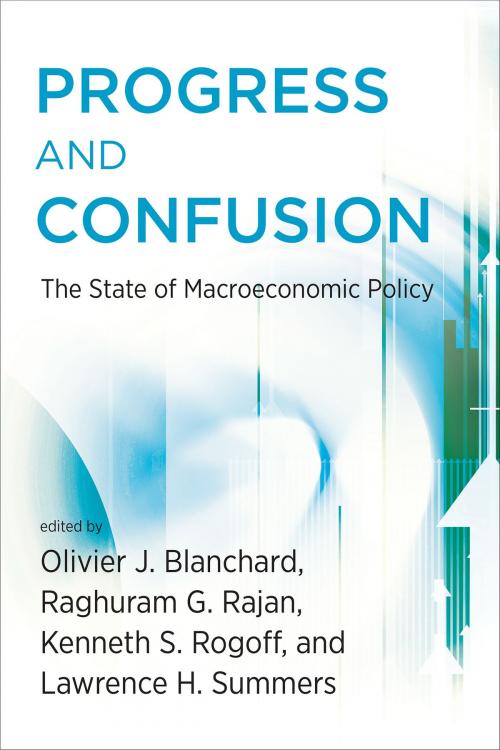Progress and Confusion
The State of Macroeconomic Policy
Business & Finance, Economics, Macroeconomics, Nonfiction, Social & Cultural Studies, Political Science, Politics, Economic Policy| Author: | Rafael Portillo, Paul A. Volcker, Viral V. Acharya, Anat R. Admati, Philipp Hildebrand, Robert E. Rubin, Sir Paul Tucker, Hyun Song Shin, Lars E.O. Svensson, José Viñals, Ben Bernanke, John B. Taylor, John Geanakoplos, Gill Marcus, Vitor Gaspar, Martin Feldstein, Marco Buti, J. Bradford DeLong, Maurice Obstfeld, Luiz Awazu Pereira da Silva, Agustín Carstens, Jaime Caruana, Zeti Akhtar Aziz, Ricardo J. Caballero, Olivier Blanchard, Kenneth Rogoff, Lawrence H. Summers, Raghuram Rajan | ISBN: | 9780262333443 |
| Publisher: | The MIT Press | Publication: | April 22, 2016 |
| Imprint: | The MIT Press | Language: | English |
| Author: | Rafael Portillo, Paul A. Volcker, Viral V. Acharya, Anat R. Admati, Philipp Hildebrand, Robert E. Rubin, Sir Paul Tucker, Hyun Song Shin, Lars E.O. Svensson, José Viñals, Ben Bernanke, John B. Taylor, John Geanakoplos, Gill Marcus, Vitor Gaspar, Martin Feldstein, Marco Buti, J. Bradford DeLong, Maurice Obstfeld, Luiz Awazu Pereira da Silva, Agustín Carstens, Jaime Caruana, Zeti Akhtar Aziz, Ricardo J. Caballero, Olivier Blanchard, Kenneth Rogoff, Lawrence H. Summers, Raghuram Rajan |
| ISBN: | 9780262333443 |
| Publisher: | The MIT Press |
| Publication: | April 22, 2016 |
| Imprint: | The MIT Press |
| Language: | English |
Leading economists consider the shape of future economic policy: will it resume the pre-crisis consensus, or contend with the post-crisis “new normal”?
What will economic policy look like once the global financial crisis is finally over? Will it resume the pre-crisis consensus, or will it be forced to contend with a post-crisis “new normal”? Have we made progress in addressing these issues, or does confusion remain? In April of 2015, the International Monetary Fund gathered leading economists, both academics and policymakers, to address the shape of future macroeconomic policy. This book is the result, with prominent figures—including Ben Bernanke, John Taylor, and Paul Volcker—offering essays that address topics that range from the measurement of systemic risk to foreign exchange intervention.
The chapters address whether we have entered a “new normal” of low growth, negative real rates, and deflationary pressures, with contributors taking opposing views; whether new financial regulation has stemmed systemic risk; the effectiveness of macro prudential tools; monetary policy, the choice of inflation targets, and the responsibilities of central banks; fiscal policy, stimulus, and debt stabilization; the volatility of capital flows; and the international monetary and financial system, including the role of international policy coordination.
In light of these discussions, is there progress or confusion regarding the future of macroeconomic policy? In the final chapter, volume editor Olivier Blanchard answers: both. Many lessons have been learned; but, as the chapters of the book reveal, there is no clear agreement on several key issues.
Contributors
Viral V. Acharya, Anat R. Admati, Zeti Akhtar Aziz, Ben Bernanke, Olivier Blanchard, Marco Buti, Ricardo J. Caballero, Agustín Carstens, Jaime Caruana, J. Bradford DeLong, Martin Feldstein, Vitor Gaspar, John Geanakoplos, Philipp Hildebrand, Gill Marcus, Maurice Obstfeld, Luiz Awazu Pereira da Silva, Rafael Portillo, Raghuram Rajan, Kenneth Rogoff, Robert E. Rubin, Lawrence H. Summers, Hyun Song Shin, Lars E. O. Svensson, John B. Taylor, Paul Tucker, José Viñals, Paul A. Volcker
Leading economists consider the shape of future economic policy: will it resume the pre-crisis consensus, or contend with the post-crisis “new normal”?
What will economic policy look like once the global financial crisis is finally over? Will it resume the pre-crisis consensus, or will it be forced to contend with a post-crisis “new normal”? Have we made progress in addressing these issues, or does confusion remain? In April of 2015, the International Monetary Fund gathered leading economists, both academics and policymakers, to address the shape of future macroeconomic policy. This book is the result, with prominent figures—including Ben Bernanke, John Taylor, and Paul Volcker—offering essays that address topics that range from the measurement of systemic risk to foreign exchange intervention.
The chapters address whether we have entered a “new normal” of low growth, negative real rates, and deflationary pressures, with contributors taking opposing views; whether new financial regulation has stemmed systemic risk; the effectiveness of macro prudential tools; monetary policy, the choice of inflation targets, and the responsibilities of central banks; fiscal policy, stimulus, and debt stabilization; the volatility of capital flows; and the international monetary and financial system, including the role of international policy coordination.
In light of these discussions, is there progress or confusion regarding the future of macroeconomic policy? In the final chapter, volume editor Olivier Blanchard answers: both. Many lessons have been learned; but, as the chapters of the book reveal, there is no clear agreement on several key issues.
Contributors
Viral V. Acharya, Anat R. Admati, Zeti Akhtar Aziz, Ben Bernanke, Olivier Blanchard, Marco Buti, Ricardo J. Caballero, Agustín Carstens, Jaime Caruana, J. Bradford DeLong, Martin Feldstein, Vitor Gaspar, John Geanakoplos, Philipp Hildebrand, Gill Marcus, Maurice Obstfeld, Luiz Awazu Pereira da Silva, Rafael Portillo, Raghuram Rajan, Kenneth Rogoff, Robert E. Rubin, Lawrence H. Summers, Hyun Song Shin, Lars E. O. Svensson, John B. Taylor, Paul Tucker, José Viñals, Paul A. Volcker















